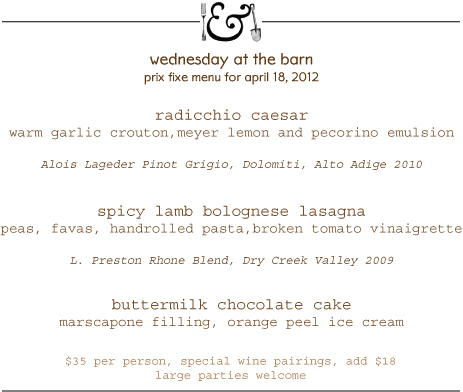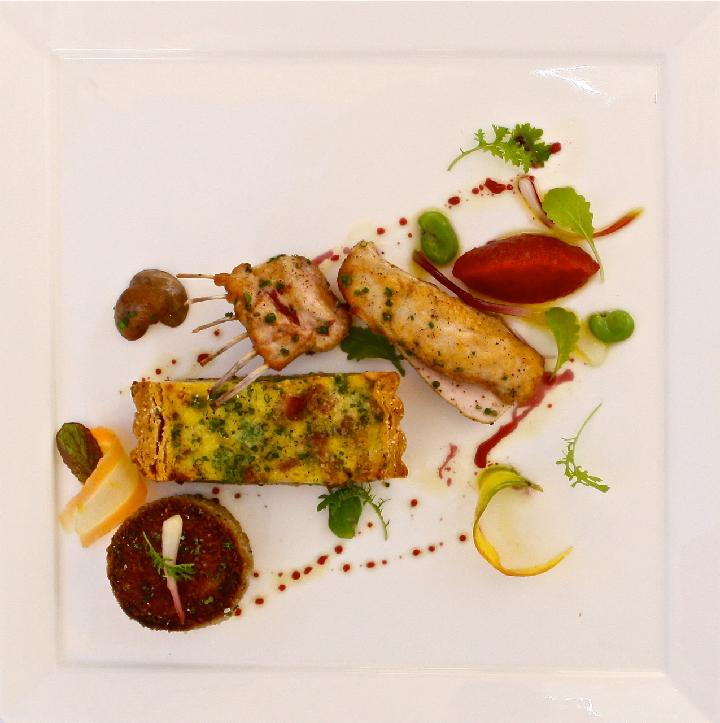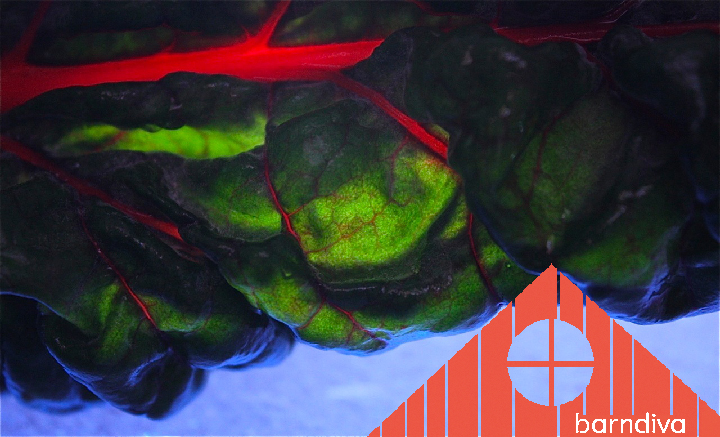
Dish of the Week
You & Mother Jus
‘You are what you eat’ is food politics 101, impossible to refute, but not far behind when it comes to the emotional vocabulary we use to describe food experiences is the truism ‘you are what your parents fed you.’ For generations like mine, who grew up in houses where someone cooked every day, the inexorable slide into a world where fewer and fewer people can make a meal from scratch is pretty shocking. And sad. Instead of a family's unique food traditions more and more formative food memories now seem to come, fully formed, from the same folks who have a vested interest in selling the corporate food culture.
Beyond the serious issues of how that culture may be compromising our health (if you ever truly get beyond them), there’s a significant qualitative difference between food memories created when people make the time to sit down together and eat a meal made from real ingredients and the default dining that's become a mainstay of the new American diet which is little more than a simulation of a home cooked meal, pseudo-foodstuffs you eat on the run or in front of a screen.
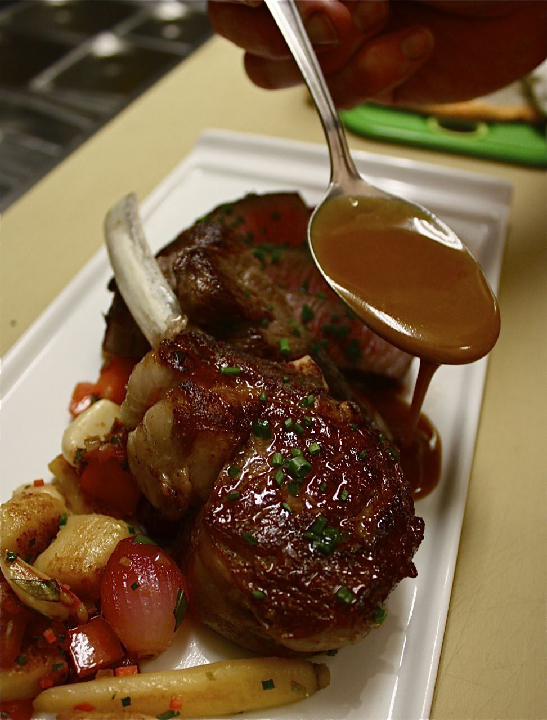
When Chef proposed Au Jus for the blog this week, neither of us was thinking of the Arby’s empire, or even the vast number of diners and truckstops that have sold Beef Au Jus sandwiches since they became popular in the 50’s. We were thinking in French, as we often do when it comes to the kind of food we cook. A direct translation of Au Jus is ‘of the juice,” with the clear reference being ‘the juice’ of the animal ~ usually lamb or beef ~ you are cooking. Once upon a time using every part of an animal meant survival; used correctly it's a term which should infer access to whole animals, which fewer and fewer restaurants have the skill or take the time to accommodate anymore.
I have no idea where the ‘beef taste’ in the standard Au Jus served with millions of beef sandwiches bought and consumed every day comes from, but I’m willing to bet the farm there is no connection whatsoever between that sauce and the piece of meat you end up eating it with. This isn’t a rant against bouillon cubes, which we all resort to from time to time, but a reminder that even the ones that promise they are made from 'quality' ingredients are primarily salt, color, and a mix of artificial and hydrolyzed natural flavorings. (FYI: the most common way to hydrolyze a protein is to boil it in a strong acid triggering a chemical breakdown that results in the formation of "free glutamate," which, when joined by sodium, makes MSG. When added this way, the FDA does not require the label to list it as such.)
 Which is not to say you need a whole side of beef in the kitchen to make a decent Au Jus at home. Sauté a piece of meat with a few diced veg, skim the fat, squirt some wine in the pan, scrape up the delicious bits clinging to the sides, and you’re good to go. (Add flour and you have a decent gravy.)
Which is not to say you need a whole side of beef in the kitchen to make a decent Au Jus at home. Sauté a piece of meat with a few diced veg, skim the fat, squirt some wine in the pan, scrape up the delicious bits clinging to the sides, and you’re good to go. (Add flour and you have a decent gravy.)
But Classic Au Ju, the way we make it here, is something else again. Everyone in the kitchen knows the various stages it goes through by heart and everyone pitches in to make it. Ryan's recipe was adapted from his mentor Richard Reddington, similar to one Daniel Boulud is known for ~ all three men incorporate a bone stock and a trim sauce, with each contributing different aromatics. They also make use of a 'Mother Jus', which is simply the saved composite of past Au Jus, in much the same way a great balsamic comes from a mother starter, as do bread and yogurt. If you love meat Ryan's Au Jus is liquid Nirvana, more vegetal than starchy, semi-transparent with a rich caramel color, dense with flavors that compress the essence of the protein. Woven throughout are fragrant, rooty aromatics. The images below document the stages from trim sauce to finish ~ directions for the bone stock follow.
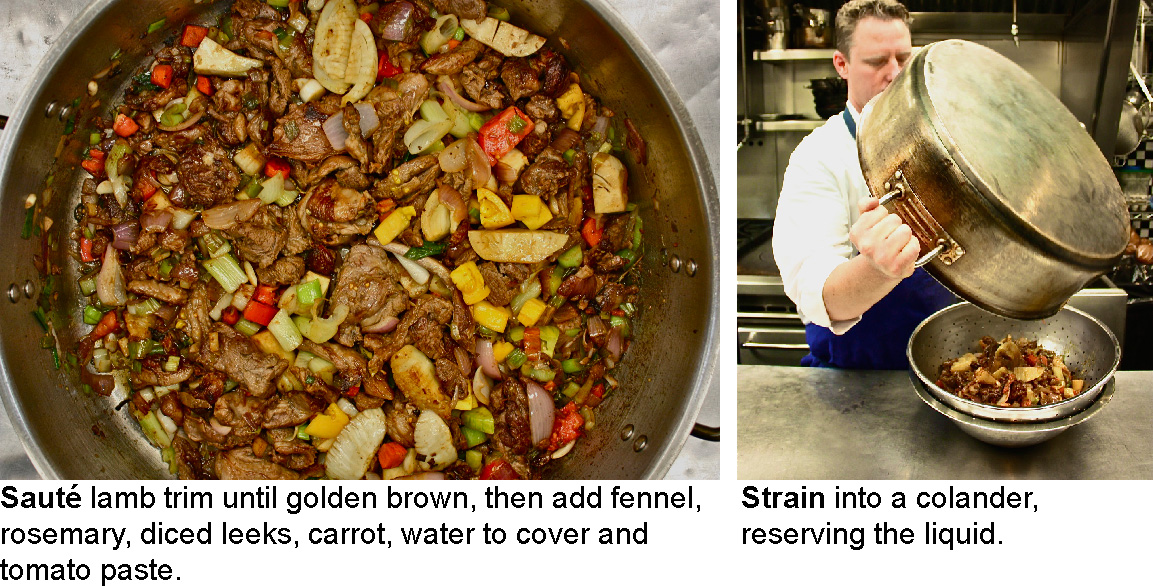

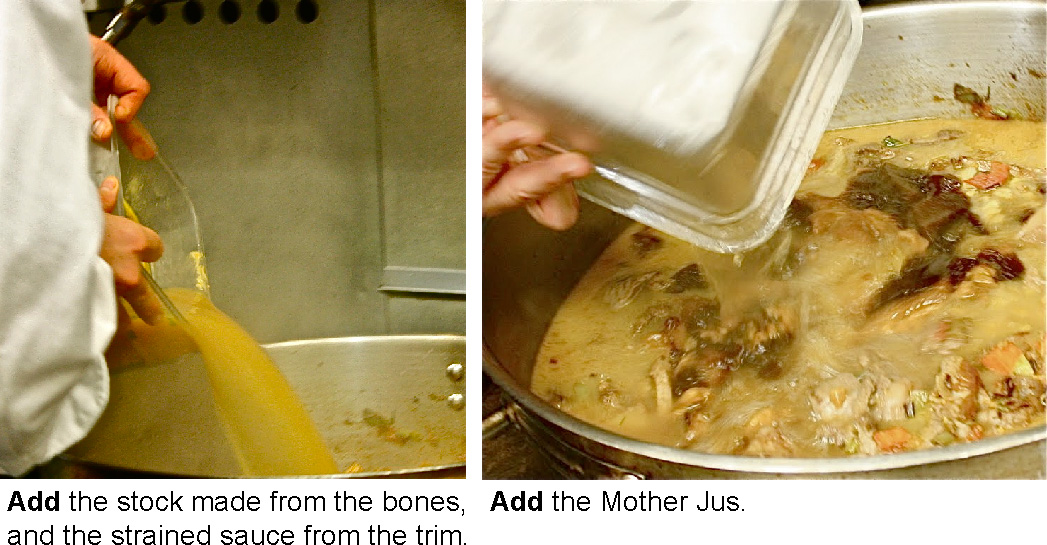


 The Au Jus is ready. At Barndiva we finish it with a knob of butter and a zoosh of sherry vinegar which brightens the meaty flavors and lifts the wine, tomato, fennel and all the aromatics.
The Au Jus is ready. At Barndiva we finish it with a knob of butter and a zoosh of sherry vinegar which brightens the meaty flavors and lifts the wine, tomato, fennel and all the aromatics.
The importance of roasting the bones and making them into a stock that is combined with the trimmings sauce and the Mother Jus can’t be overstated ~ the natural thickness of the final sauce is a direct result of the gelatin released from the collagen in the bones, the tendons, sinew, and connective tissue. Roast the bones for 1-2 hours at 350, then add to a stock pot in which mirepoix has been sautéed and combined with water, tomato paste, bay leaf, garlic, cloves, black pepper, and thyme. The bone stock is simmered for six hours, strained and reserved. The sauce made from the trim, detailed above, takes about 3 hours.
In the Gallery
 Ah Coco, une femme douce, a lady we always love to hear from, especially when a new container arrives from France. This one had some gems ~ including cast iron heads that looked like they'd survived a hundred years of trial by fire which, in fact, they did. Cut from fireplace dogs from the 1920's on, most come in pairs which make beautiful bookends. Singly they are wonderful, unique pieces. Coco tells us the vases were part of an elaborate 19th Century garden wall, pitted and burnished a gorgeous old penny bronze.
Heads: $75
Vases (only two left): $100
Ah Coco, une femme douce, a lady we always love to hear from, especially when a new container arrives from France. This one had some gems ~ including cast iron heads that looked like they'd survived a hundred years of trial by fire which, in fact, they did. Cut from fireplace dogs from the 1920's on, most come in pairs which make beautiful bookends. Singly they are wonderful, unique pieces. Coco tells us the vases were part of an elaborate 19th Century garden wall, pitted and burnished a gorgeous old penny bronze.
Heads: $75
Vases (only two left): $100

In the Fields with Friends
 File this under "We're not the only ones around here still doing things the old fashioned way."
File this under "We're not the only ones around here still doing things the old fashioned way."
On Sunday we took a ride out to the Preston's to see how they were getting on with their new apple juice press. If you haven't been to Lou and Susan's beautiful farm and winery on West Dry Creek in a while, go soon, before the rains set in. Their new indoor farmstand ~ with select pieces of Susan's indelible art ~ is almost finished, built to go year round with room for drying and storing. Out in the fields there are still lots of tomatoes on the vines and vegetables growing in the various gardens. This is a great place to bring the kids, to walk and talk to them about everything you see. Keep an eye out for the traveling Hen House Gypsy Wagons where you'll find the pigs rototilling the soil, chickens not far behind (the better to picks up any delicious morsels those pig snouts miss). The way animals co-habit at Preston Family Vineyard could teach our elected officials in Washington a thing or two about getting along. All of us, for that matter.
If you haven't signed on to Lou's blog yet, do so, it's great stuff... here's the link.
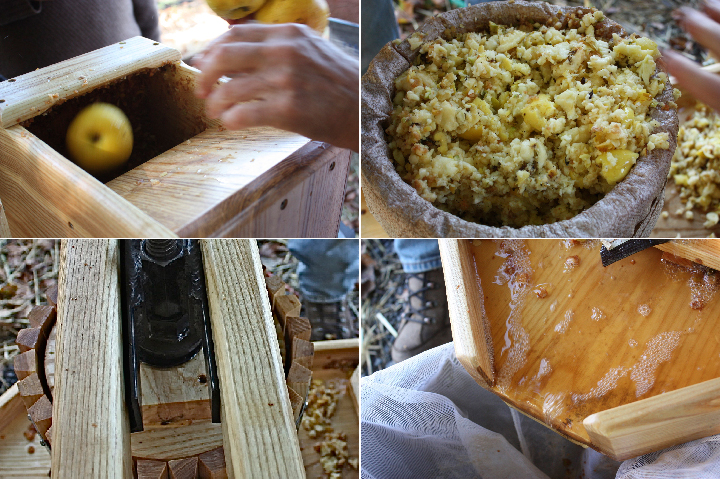 A hand turned apple press is simple to use. A lined, wood slate bucket catches the chopped apples, when it's full you slide the bucket under the press. The handle is connected to an Acme Thread Screw which is attached to a plate that as you turn applies pressure to the apples. All you do is turn the handle until the juice stops running. Fresh Preston Apple juice is available in the new farmstore while it lasts. Their custom Oak press is made by Correl Cider Presses.
A hand turned apple press is simple to use. A lined, wood slate bucket catches the chopped apples, when it's full you slide the bucket under the press. The handle is connected to an Acme Thread Screw which is attached to a plate that as you turn applies pressure to the apples. All you do is turn the handle until the juice stops running. Fresh Preston Apple juice is available in the new farmstore while it lasts. Their custom Oak press is made by Correl Cider Presses.
 A pensive but happy customer.
A pensive but happy customer.
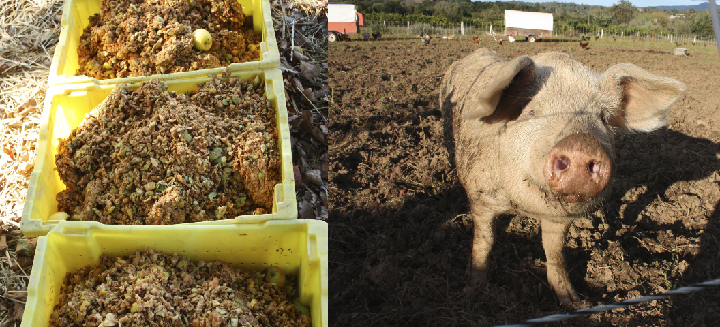 Another happy customer who, who along with the chickens, will dine on what's left of the apples.
Another happy customer who, who along with the chickens, will dine on what's left of the apples.
All text Jil Hales. All photos Jil Hales(unless otherwise noted)
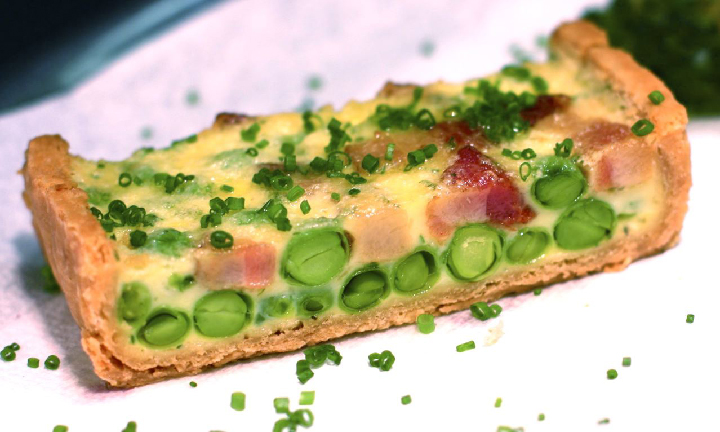 We are doing the quiche in terrines ~ flaky edges, big chunks of bacon, favas ~ it's almost too pretty to eat. Almost. Rabbit is great stewed whole, but chef’s signature presentation is to break it down and cook each cut separately. A bit more time and labor but you get a perfectly moist sirloin, juicy little rack, whole grilled kidney. Perhaps the most flavorful part of the dish is the rillette, which uses the dark meat from the legs and shoulder. We confit them in duck fat for about four hours, then pull the meat off while it's still warm and falling off the bone. Lots of dijon, sherry vinegar, salt, pepper, chives, and just a hit of minced sweet red onion. Before forming patties the mix is rolled in plastic wrap and chilled, which also gives the flavors time to meld. Taking the dark meat on any animal and making rillettes is worth learning how to do; it's a great way to use the least expensive cuts with the most flavor. In our case we are buying whole animals ~ using everything goes with the territory.
We are doing the quiche in terrines ~ flaky edges, big chunks of bacon, favas ~ it's almost too pretty to eat. Almost. Rabbit is great stewed whole, but chef’s signature presentation is to break it down and cook each cut separately. A bit more time and labor but you get a perfectly moist sirloin, juicy little rack, whole grilled kidney. Perhaps the most flavorful part of the dish is the rillette, which uses the dark meat from the legs and shoulder. We confit them in duck fat for about four hours, then pull the meat off while it's still warm and falling off the bone. Lots of dijon, sherry vinegar, salt, pepper, chives, and just a hit of minced sweet red onion. Before forming patties the mix is rolled in plastic wrap and chilled, which also gives the flavors time to meld. Taking the dark meat on any animal and making rillettes is worth learning how to do; it's a great way to use the least expensive cuts with the most flavor. In our case we are buying whole animals ~ using everything goes with the territory.


 Rabbit is only one dish on the new Spring Menu, but it is always a favorite. The flavor is subtle and light, with a hint of grassy sweetness in the finish. Our menus change often this time of year, as delicacies like ramps and fiddleheads have an especially short season. I can't promise how long the clematis will be blooming either. The best part of spring is the worst part of spring: blink and you miss it.
Rabbit is only one dish on the new Spring Menu, but it is always a favorite. The flavor is subtle and light, with a hint of grassy sweetness in the finish. Our menus change often this time of year, as delicacies like ramps and fiddleheads have an especially short season. I can't promise how long the clematis will be blooming either. The best part of spring is the worst part of spring: blink and you miss it.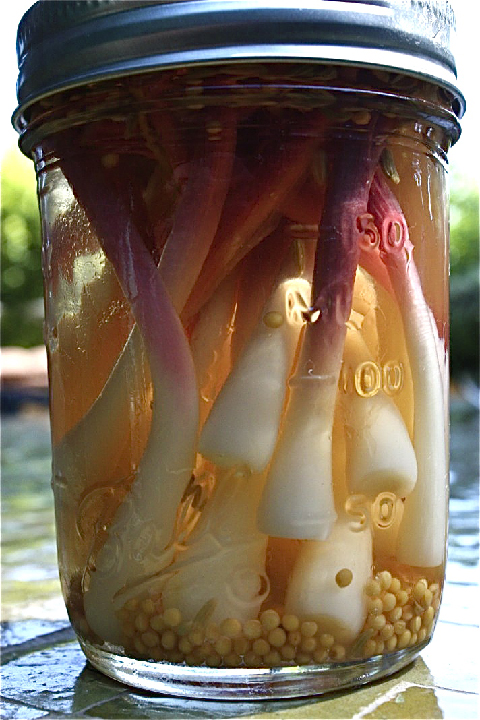
 They are going fast! Don't miss out on a chance to spend a great 'guilt free' afternoon of drinking, eating, and talking clothes as Studio Barndiva joins forces with the talented folks at Brush Salon to support the American Diabetes Association's Tour de Cure. Joining us with a wonderful runway fashion show will be four of Healdsburg's finest clothing shops ~ Susan Graf Limited, M Clothing, Outlander Men's Gear and Clutch. Barndiva will be doing the cocktails and food, Vin Couture will be pouring the wine.
They are going fast! Don't miss out on a chance to spend a great 'guilt free' afternoon of drinking, eating, and talking clothes as Studio Barndiva joins forces with the talented folks at Brush Salon to support the American Diabetes Association's Tour de Cure. Joining us with a wonderful runway fashion show will be four of Healdsburg's finest clothing shops ~ Susan Graf Limited, M Clothing, Outlander Men's Gear and Clutch. Barndiva will be doing the cocktails and food, Vin Couture will be pouring the wine.


